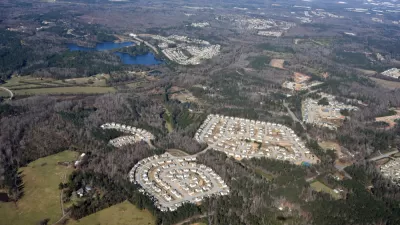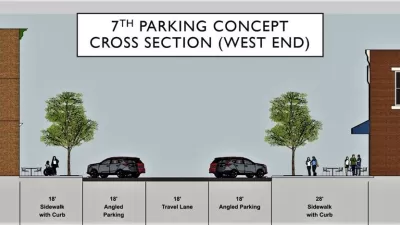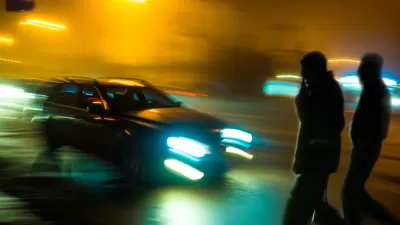Integrating autonomous vehicles into cities will require effectively managing city streets and suburban sprawl.

In an excerpt from his new book Walkable City Rules: 101 Steps to Making Better Places, Jeff Speck considers the future of autonomous vehicles and their place in the urban landscape.
Speck argues that while advocates of AVs outline a multitude of potential benefits, an alternative take is less positive:
History would suggest that the widely held vision of swarming public fleets, uninterrupted by private and non-autonomous cars, is unlikely to happen in the United States, where no city has ever shown the willingness to limit private car use in any meaningful way, despite crippling traffic.
Speck says AVs on American roads will result in more car travel, not less. As a result, the focus for cities should be on regulating roadways. “In an AV future, each city street would ideally be allocated a limited number of driving lanes, no more than currently present. Only in this way will our downtowns remain welcoming to more than just cars,” says Speck.
In addition, AVs will encourage travel over longer distances and so cities must work to contain the suburban sprawl that this travel will encourage. Cities also need to strategically manage the relationship between AVs and transit, says Speck. The significantly higher capacity of transit vehicles means that urban mobility in cities grappling with congestion would be hampered if transit is swapped out for low-capacity AVs.
FULL STORY: Walkable City Rules: Don’t Expand City Streets for Self-Driving Cars

Alabama: Trump Terminates Settlements for Black Communities Harmed By Raw Sewage
Trump deemed the landmark civil rights agreement “illegal DEI and environmental justice policy.”

Study: Maui’s Plan to Convert Vacation Rentals to Long-Term Housing Could Cause Nearly $1 Billion Economic Loss
The plan would reduce visitor accommodation by 25% resulting in 1,900 jobs lost.

Planetizen Federal Action Tracker
A weekly monitor of how Trump’s orders and actions are impacting planners and planning in America.

Wind Energy on the Rise Despite Federal Policy Reversal
The Trump administration is revoking federal support for renewable energy, but demand for new projects continues unabated.

Passengers Flock to Caltrain After Electrification
The new electric trains are running faster and more reliably, leading to strong ridership growth on the Bay Area rail system.

Texas Churches Rally Behind ‘Yes in God’s Back Yard’ Legislation
Religious leaders want the state to reduce zoning regulations to streamline leasing church-owned land to housing developers.
Urban Design for Planners 1: Software Tools
This six-course series explores essential urban design concepts using open source software and equips planners with the tools they need to participate fully in the urban design process.
Planning for Universal Design
Learn the tools for implementing Universal Design in planning regulations.
Caltrans
Smith Gee Studio
Institute for Housing and Urban Development Studies (IHS)
City of Grandview
Harvard GSD Executive Education
Toledo-Lucas County Plan Commissions
Salt Lake City
NYU Wagner Graduate School of Public Service





























